Ten stops.
A journey
through time.
Valdosta became the capital of Lowndes County, GA in 1860. The rest is history. Or is it? Come discover the rich heritage of Valdosta and its surrounding counties through our self-guided driving and walking tours. These carefully curated tours will introduce you to the buildings that helped write Valdosta’s story. You'll learn that we are a city that takes pride in its past—and it's easy to see why.
Before you lace up your sneakers or pile your loved ones into your car for a quick cruise, here's a short history lesson to get you started. Valdosta was not the first capital of Lowndes County. It was originally Troupville, an outpost that attracted settlers for its beautiful landscapes and fertile soil. But when Atlantic & Gulf Railroad decided to build a railway four miles south of town, the residents picked up and moved for more opportunity. They named the new town Valdosta in honor of the former Governor George Troup's Plantation, “Val d'Aosta.” The city became Lowndes County's administrative capital in 1860.
Journey along our self-guided tours with stops in front of some of Valdosta's oldest buildings and historic monuments. Due to different roads and distance, each tour is slightly different, telling our story in a unique way. It’s time to walk a mile in our shoes or take a ride down an unforgettable road that effortlessly weaves together our history—uncovering the men and women that helped contribute to who we are today.
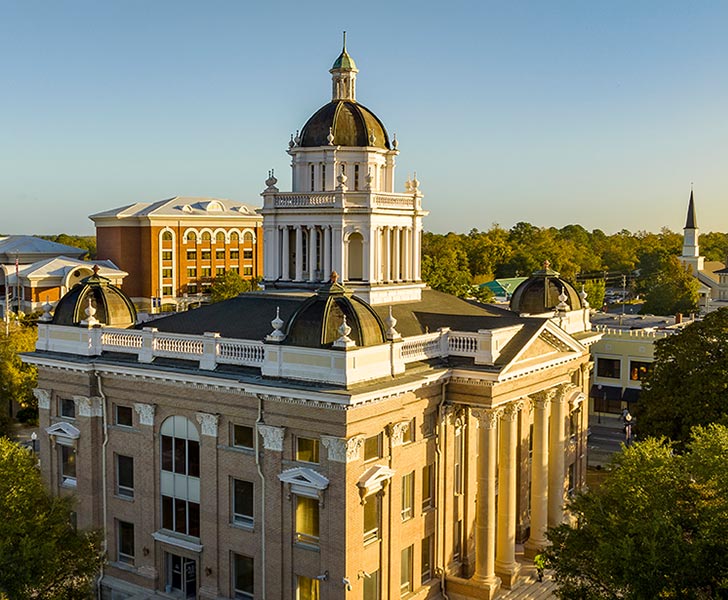
Historic Lowndes County Courthouse
Your tour begins at the intersection of Central and Ashley streets in front of the eye-catching Lowndes County Courthouse. This stately domed building was designed by architect Frank P. Millburn and was completed in 1905. With its elaborate portico, the courthouse is among the finest in Georgia. As you tour the grounds, take notice of the time capsule monument which was erected in honor of the American Bicentennial on July 4, 1976 and will be opened in 2026.
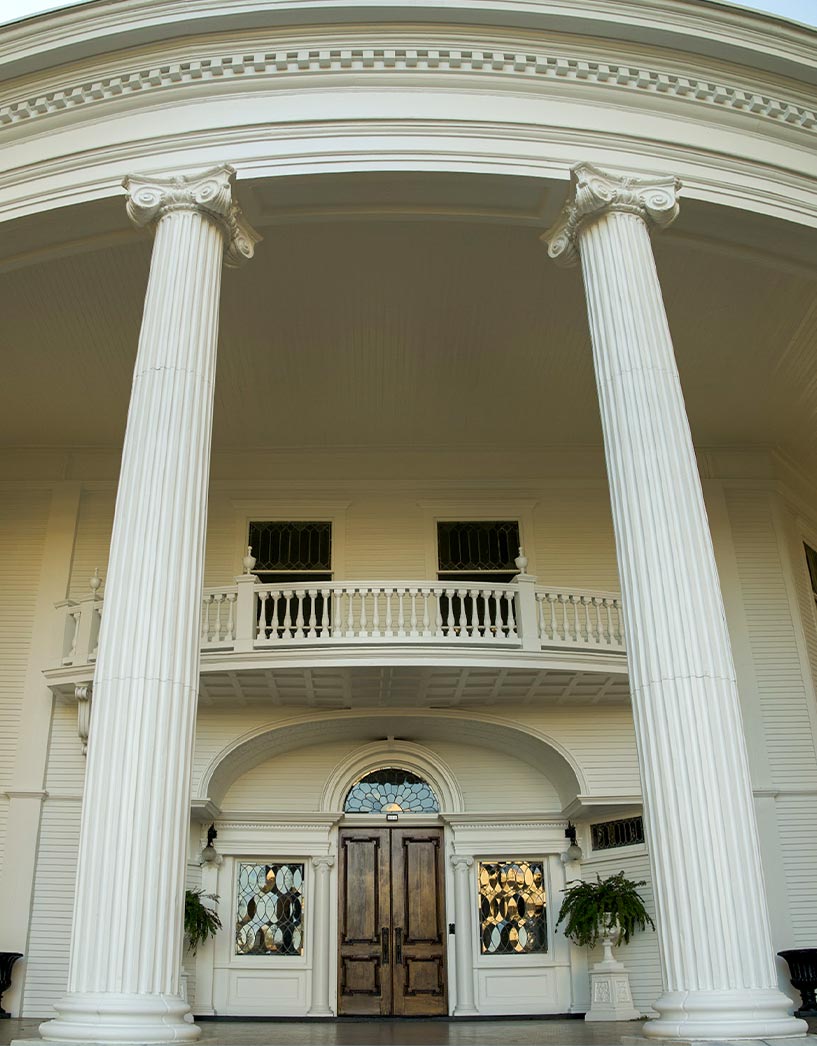
The Crescent
Head north on Ashley Street and take a left on Gordon Street toward one of the greatest architectural treasures of the South: The Crescent. Named after its expansive crescent-shaped porch, this structure was built by Colonel William S. West in 1898 as a lavish 23-room home for his family. In 1951, at the risk of being demolished, three ladies from the local garden club fought to preserve it. Today, the Crescent is home of all the Garden Clubs in Valdosta and hosts special events year around.
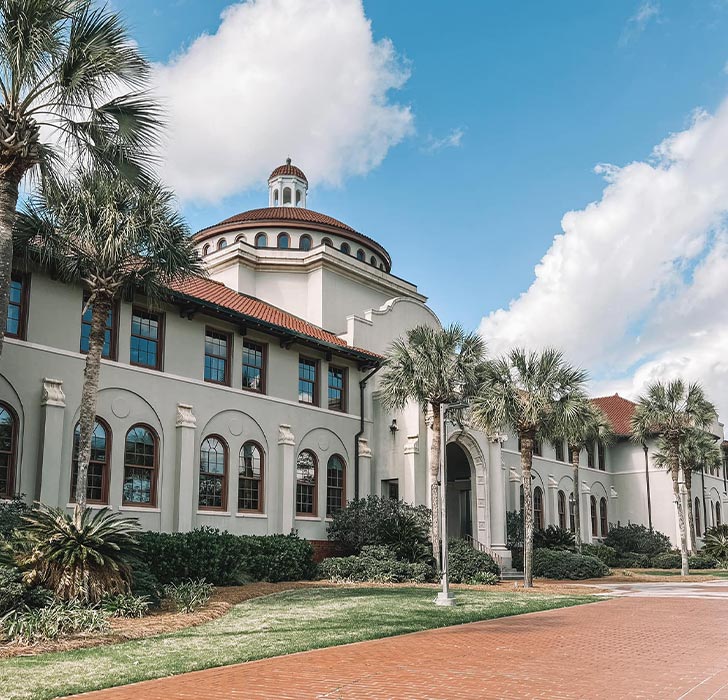
Valdosta State University
Continue north on Patterson Street until you reach Valdosta State University. Step under the iconic iron gate and stroll past the red-roofed buildings and leafy palm trees in search of West Hall. Built in 1917, the Spanish mission-style building is the oldest structure on campus and the symbol of the university. Today, the campus is a thriving co-ed university of 11,000 students. Want to learn even more about the campus? Schedule a campus tour.
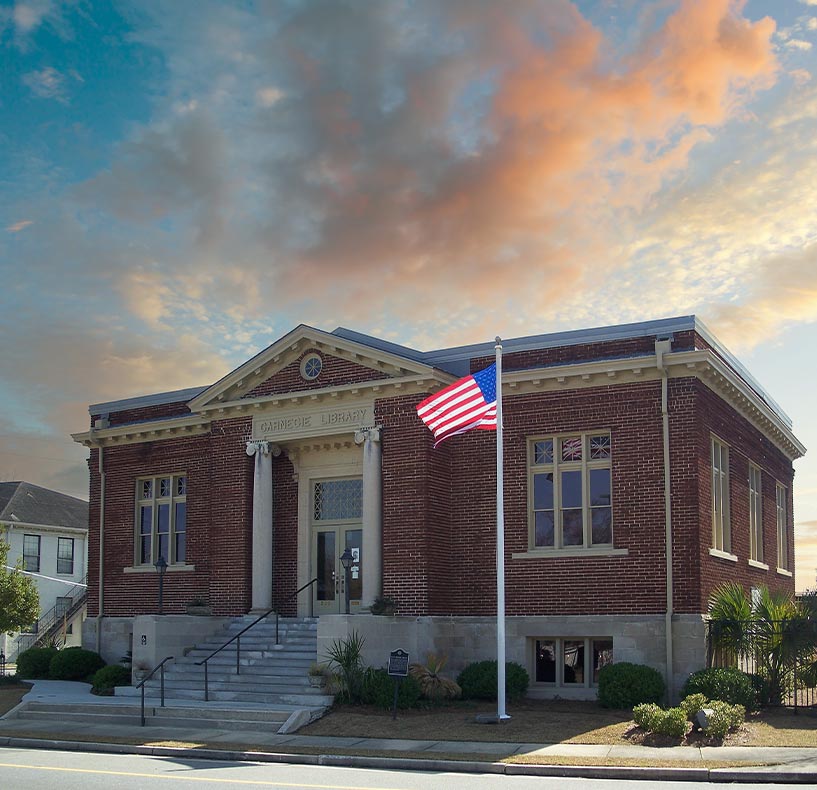
Lowndes County Historical Society Museum
Once you've explored the VSU campus in all its glory, head south on Oak Street back to Central Avenue downtown. The elegant red-brick building there was constructed in 1913 as a library, funded in part by a Carnegie grant. Today, the former library houses the Lowndes County Historical Society Museum. This 10,000 square-foot museum displays photographs, documents and artifacts that illustrate the storied history of Lowndes County. Dive into the extensive archives to see what you dig up.
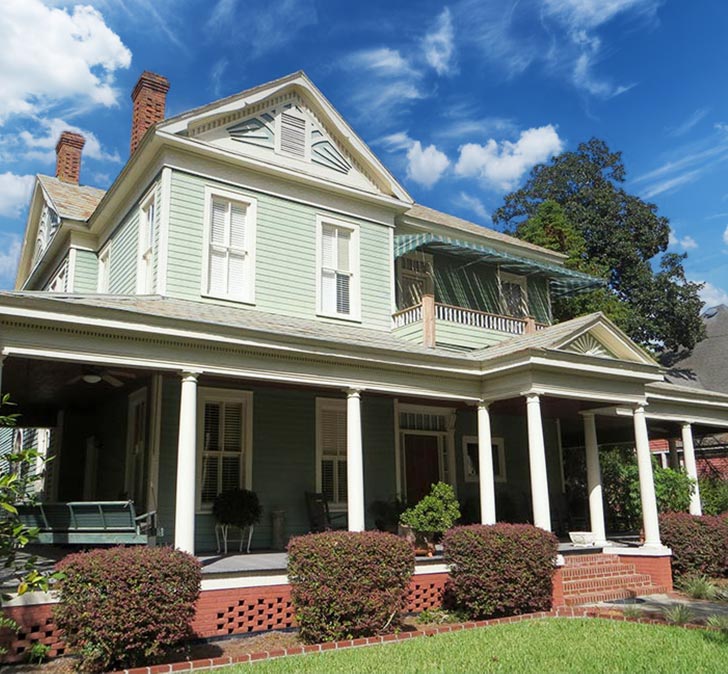
R.T. Myddleton House
Turn the corner onto River Street and let your eyes catch glimpse of a cheerful seafoam green building. This Victorian-style house with its beautiful wrap-around porch, four fireplaces and formal living and dining rooms was built by R.T. Myddleton in 1895. Today, the home is better known as the Fairview Inn, a quaint and homey bed and breakfast that honors the history of Valdosta.
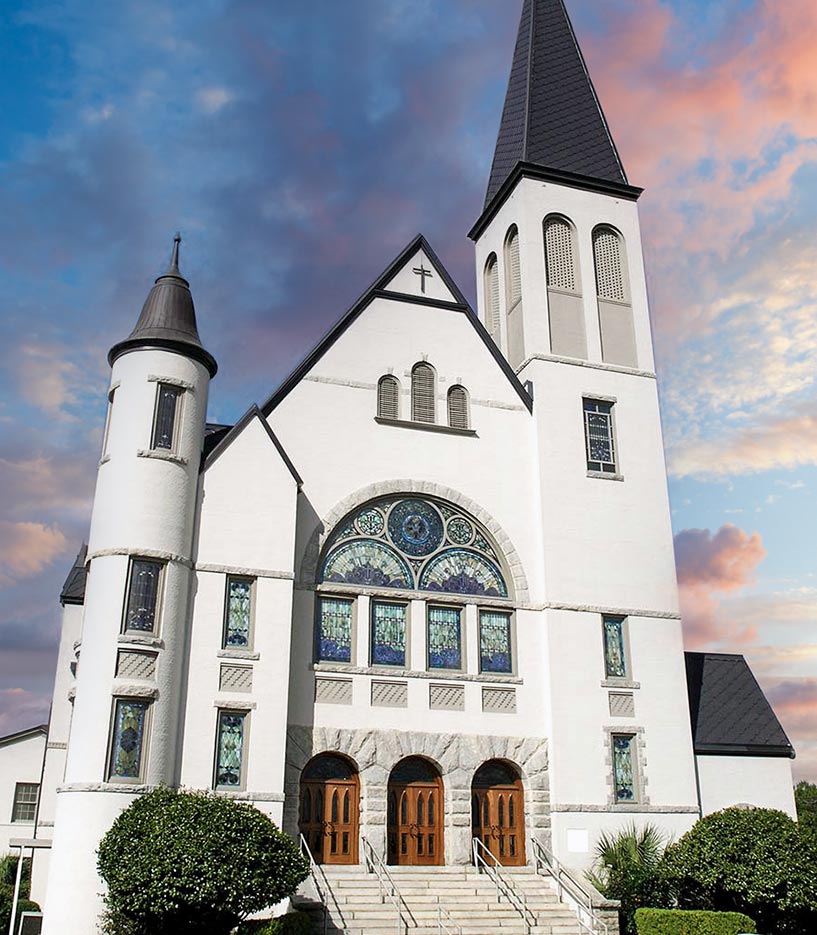
First Baptist Church
Valdosta is known for its many churches, but none more iconic than First Baptist Church. To get there, take Valley Street towards town until you see the steeple-topped building. Constructed in the 1800s, the congregation originated in Troupville but when the town relocated to Valdosta, the members dismantled their church and moved it to the corner of Ashley and Valley streets.
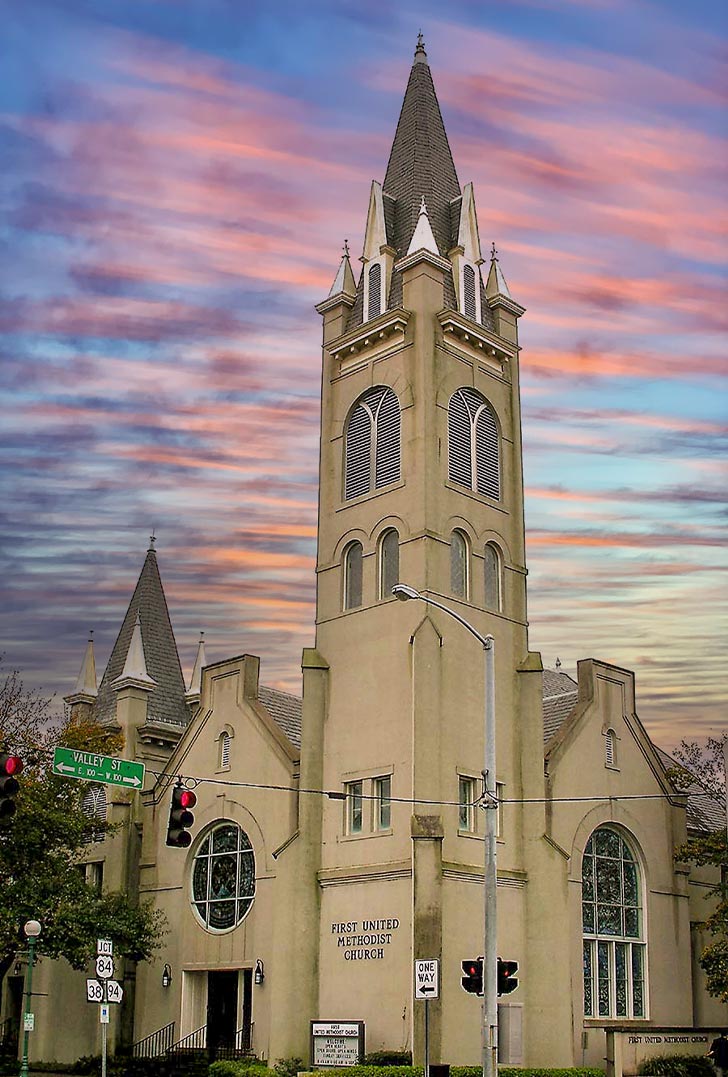
First United Methodist Church
Continue to Patterson Street and you'll reach another church steeped in history, the First United Methodist Church. Built in the later Victorian era, this Romanesque Revival-style structure is striking for its tall tower with buttresses. Step inside to admire its fine woodwork, intricate stained glass and soaring ceiling.
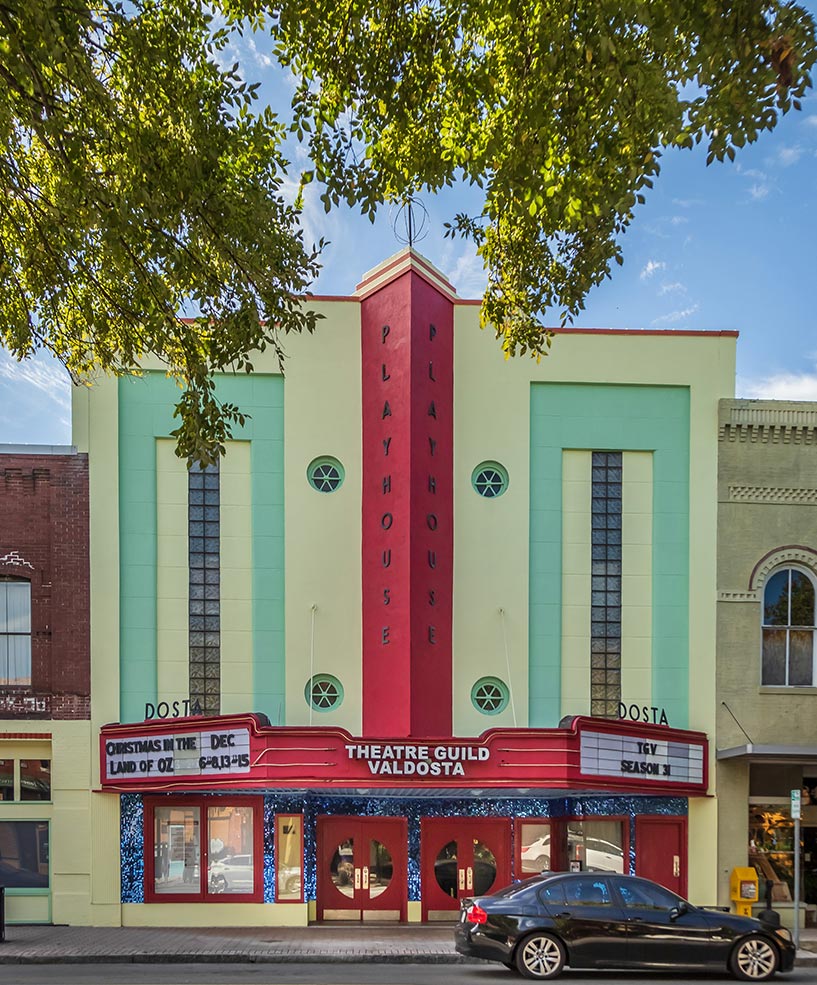
Dosta Playhouse
Continue on Valley Street and take a right on Ashley Street. You'll soon step into the 20th century at the Dosta Playhouse. The striking Art Moderne-style theater was built as a cinema in 1940 but fell out of use decades later. Then in the 1990s, a performing arts group called the Lowndes Valdosta Arts Commission fell in love with the space and decided to buy it. However, they had a lot of work on their hands. The space barely had a roof much less seating or even heating and air conditioning. Visitors who attend performances today get to see the playhouse in all its renovated glory.
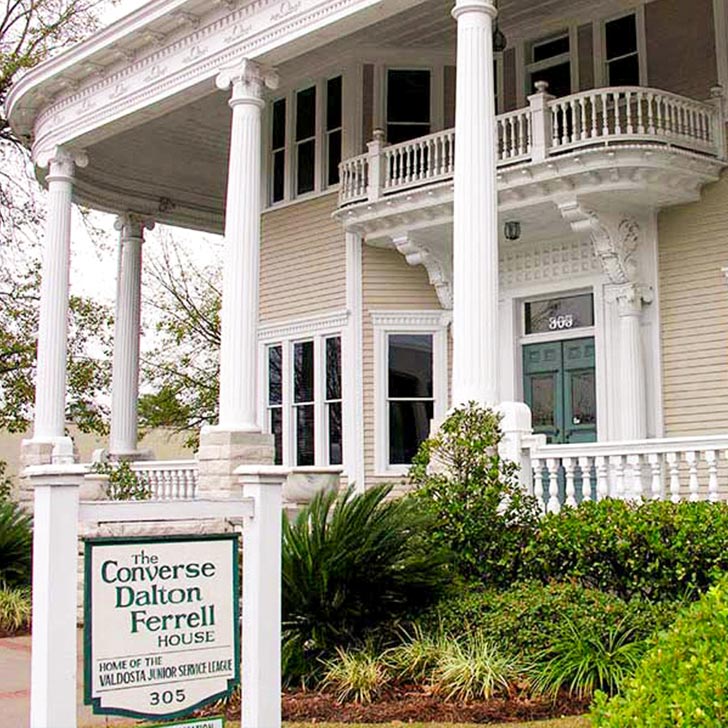
Converse Dalton
Ferrell House
Loop back around to Patterson Street to see one of the most iconic buildings in town, the three-story Converse Dalton Ferrell House built in 1902 as the private home of Thomas Briggs Converse Sr., his wife and their 13 children. The building's most iconic feature is the two-story portico that curves around the façade. Step up close to admire the beautiful porch and the large terrace on the right side. Today, the home is used as a meeting venue for the Valdosta Junior Service League.
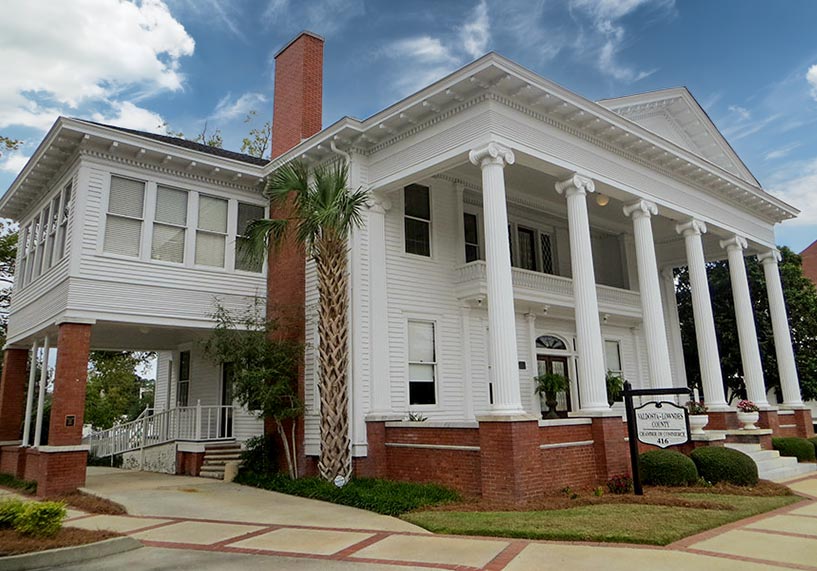
Barber-Pittman
House
Continue on Ashley Street to the final stop on your tour: the Barber-Pittman House. Built in 1915 for E.R. Barber, an inventor and the first Coca Cola bottler located outside of Atlanta. In 1977, Barber's daughter, Ola, donated the house to the citizens of Valdosta and its now used as the headquarters for the Valdosta-Lowndes Chamber of Commerce.
